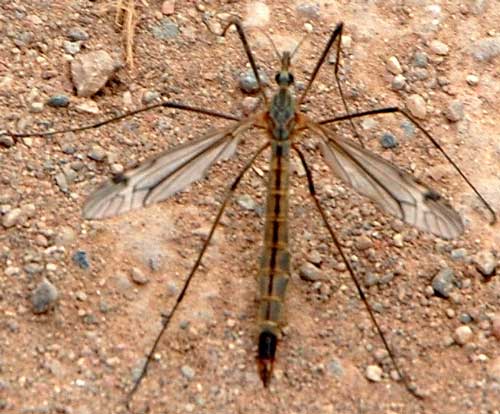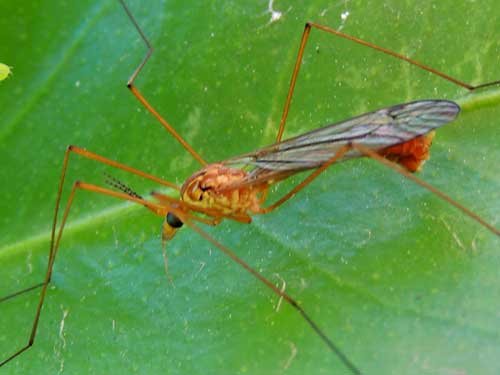Crane Fly
Tipula sp.

A crane fly, Tipula sp., observed in abundance on the wing in Peppersauce Canyon, Pinal Co., Arizona, USA April 2010.
Tipulidae -- Crane Fly Family
Most years these large conspicuous insects are rare. However, following a wet winter and spring they can become very abundant. Crane flies have extra long, spindly legs and fly very weakly, slowly lifting off vegetation or the ground and often arriving in large numbers at electric lights. They journey to find mates or places to deposit the next generation's eggs.
Adult crane flies cannot feed except for possibly flower nectar and emerge from the soil solely to mate and lay eggs for the next generation. Some people mistake crane flies for giant mosquitoes or imagine that they are some sort of mosquito hawk or predator. In fact the adults are harmless, but may be a nuissance when they enter homes due to their attraction to light. The immature stage larva lives in soil where there is an accumulation or organic matter such as thatch or dead leaves. Some species (and there are many) will feed upon the roots of turf grass. They grow and mature faster when the soil is moist and may enter into prolonged estivation (akin to hibernation) if conditions are unfavorable.

Another Crane fly species seen after a heavy spring rain in Phoenix, Arizona, USA. March 2013.